VEGETABLES


VEGETABLES DELICIOUS RECIPES FOR ROOTS, BULBS, SHOOTS & STEMS

MASTERCHEF WINNER 2009 MAT FOLLAS PHOTOGRAPHY BY STEVE PAINTER


Photography, Design and prop styling Steve Painter Editor Stephanie Milner Production David Hearn Art Director Leslie Harrington Editorial Director Julia Charles Publisher Cindy Richards Food stylist Lucy McKelvie Indexer Hilary Bird First published in 2016. This revised edition published in 2020 by Ryland Peters & Small 2021 Jockeys Fields London WC1R 4BW and 341 E 116th St New York NY 10029 www.rylandpeters.com 10 9 8 7 6 5 4 3 2 1 Text Mat Follas 2016, 2020 Design and photographs Ryland Peters & Small 2016, 2020 Printed in China The authors moral rights have been asserted. All rights reserved. No part of this publication may be reproduced, stored in a retrieval system or transmitted in any form or by any means, electronic, mechanical, photocopying or otherwise, without the prior permission of the publisher. eISBN: 978-1-78879-266-0 ISBN: 978-1-78879-210-3 A CIP record for this book is available from the British Library. US Library of Congress CIP data has been applied for.
Notes Both British (Metric) and American (Imperial plus US cups) measurements are included in these recipes for your convenience, however it is important to work with one set of measurements and not alternate between the two within a recipe. All spoon measurements are level unless otherwise specified. All eggs are medium (UK) or large (US), unless specified as large, in which case US extra-large should be used. Uncooked or partially cooked eggs should not be served to the very old, frail, young children, pregnant women or those with compromised immune systems. Ovens should be preheated to the specified temperatures. See for more information.
We recommend using an oven thermometer. Whenever butter is called for within these recipes, unsalted butter should be used. When a recipe calls for the grated zest of citrus fruit, buy unwaxed fruit and wash well before using. If you can only find treated fruit, scrub well in warm soapy water before using. To sterilize preserving jars, wash them in hot, soapy water and rinse in boiling water. Place in a large saucepan and cover with hot water.
With the saucepan lid on, bring the water to a boil and continue boiling for 15 minutes. Turn off the heat and leave the jars in the hot water until just before they are to be filled. Invert the jars onto a clean dish towel to dry. Sterilize the lids for 5 minutes, by boiling or according to the manufacturers instructions. Jars should be filled and sealed while they are still hot. Cheeses started with animal rennet are not suitable for strict vegetarians so read food labelling carefully and, if necessary, check that the cheese you buy is made with a non-animal (microbial) starter.
Traditional Parmesan is not vegetarian. See for more information. Contents  Im a Kiwi (New Zealander) living in the UK, for 20 years now, and I still find the English a strange bunch when it comes to eating. They always finish every plate of food, no matter how much there is on the plate, whereas I grew up with a South-east Asian influence where you always leave a little food on the plate to show your host they have served enough food. The English consider it an insult to leave anything as it implies they didnt like it. As a restaurateur and chef its incredibly satisfying, I love that the plates are clear and theres no wastage but I personally see every clear plate as a message saying I didnt serve enough I just cant win.
Im a Kiwi (New Zealander) living in the UK, for 20 years now, and I still find the English a strange bunch when it comes to eating. They always finish every plate of food, no matter how much there is on the plate, whereas I grew up with a South-east Asian influence where you always leave a little food on the plate to show your host they have served enough food. The English consider it an insult to leave anything as it implies they didnt like it. As a restaurateur and chef its incredibly satisfying, I love that the plates are clear and theres no wastage but I personally see every clear plate as a message saying I didnt serve enough I just cant win.
Creating vegetarian dishes is similar. Ive been restricted by my upbringing and preconceptions about food. I grew up with traditional meat and two veg meals. I expect to see something on a plate that is meat, to the extent that my idea was to write a cookbook of vegetable-based meals not restricted by only using vegetable products. I was thinking like a typical chef, theres a standing joke in many kitchens that any vegetarian dish can be improved with bacon, but the reality is that it shows ignorance of the options and flavours vegetables can produce. I started cooking and testing, I realised that very few of the recipes used meat as I had initially expected them to.
I could always find vegetarian alternatives that were just as good to use, if not better, and the whole process has been inspiring. For me personally it has been a journey of discovery to the amazing flavour combinations available when I have stopped being mentally limited by the requirement of a meat product on every dish. I now reach for an aubergine/eggplant, fennel bulb, some mushrooms or anything fresh from my garden for inspiration long before I reach for meat. I have written vegetarian meals that I want to eat. Meals that I would like to eat over a meat dish. One of my bestselling dishes is the simple Red Onion Tarte Tatin with Goats Cheese and Dandelion Sauce on its delicious, savoury, sweet and cheesy with hints of bitterness from the dandelions in the sauce, a perfectly balanced meal that my customers love.
A real bugbear of mine is vegetable dishes that imitate meat. I spent ages trying to make a good bean burger. What I found is that as I replaced the beans with mashed potatoes it tasted better and better, so I then tried it with no beans at all before realising that what I had achieved was a version of one of my favourite quick lunches, a chip butty. Next, I tried smoked mashed potato, something I serve in the restaurant thats hugely popular, and it got better. I then decided to try a smoked potato rosti to get the crunch of chips it was amazing and became the basis for The Best Burger on . Ive made the vegetable the star its not hidden or trying to imitate the flavour of meat.
With all the amazing ways we treat meat to enhance the flavour and texture, like smoking, griddling, and so on, unsurprisingly, if you apply the same processes to vegetables, they taste amazing, too. I have used many of the processes in the book, griddling the cauliflower in my Cauliflower Cheese on . Ive written in my acknowledgments about Jo Francis, who introduced me to mushroom foraging, but there are a few other foraged ingredients used throughout the book. Try to use some of the foraged ingredients wild garlic/ramps is my favourite example, my first restaurant was named after it, but theres also the sharpness of sorrel, the mushroomy flavour of ribwort plantain, aromatic horseradish nothing in the animal kingdom comes close to these fresh and flavourful ingredients! Learn to forage safely from someone who knows what they are doing, dont just use a book. My recipes are written for fan ovens, so increase the temperatures according to manufacturers instructions if yours is conventional. Where seasoning is with salt, vinegars and chilli/chile, I suggest adding less and tasting because your palate is not the same as mine and the flavour and sweetness of vegetables will differ depending on the weather and ripeness.


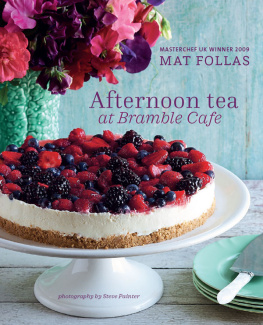


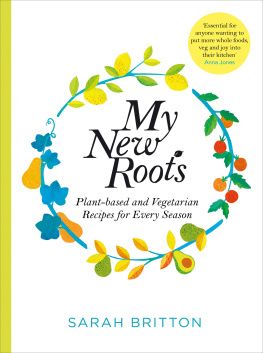

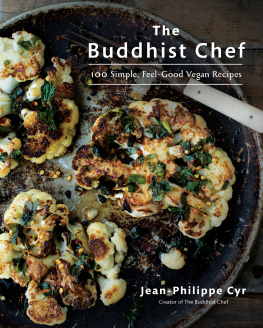
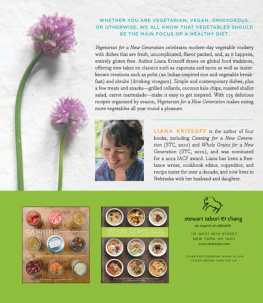
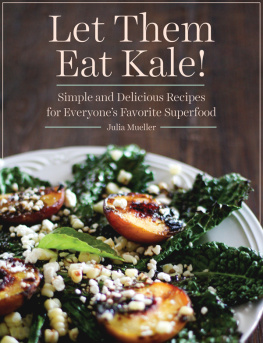


 VEGETABLES DELICIOUS RECIPES FOR ROOTS, BULBS, SHOOTS & STEMS
VEGETABLES DELICIOUS RECIPES FOR ROOTS, BULBS, SHOOTS & STEMS  MASTERCHEF WINNER 2009 MAT FOLLAS PHOTOGRAPHY BY STEVE PAINTER
MASTERCHEF WINNER 2009 MAT FOLLAS PHOTOGRAPHY BY STEVE PAINTER 
 Photography, Design and prop styling Steve Painter Editor Stephanie Milner Production David Hearn Art Director Leslie Harrington Editorial Director Julia Charles Publisher Cindy Richards Food stylist Lucy McKelvie Indexer Hilary Bird First published in 2016. This revised edition published in 2020 by Ryland Peters & Small 2021 Jockeys Fields London WC1R 4BW and 341 E 116th St New York NY 10029 www.rylandpeters.com 10 9 8 7 6 5 4 3 2 1 Text Mat Follas 2016, 2020 Design and photographs Ryland Peters & Small 2016, 2020 Printed in China The authors moral rights have been asserted. All rights reserved. No part of this publication may be reproduced, stored in a retrieval system or transmitted in any form or by any means, electronic, mechanical, photocopying or otherwise, without the prior permission of the publisher. eISBN: 978-1-78879-266-0 ISBN: 978-1-78879-210-3 A CIP record for this book is available from the British Library. US Library of Congress CIP data has been applied for.
Photography, Design and prop styling Steve Painter Editor Stephanie Milner Production David Hearn Art Director Leslie Harrington Editorial Director Julia Charles Publisher Cindy Richards Food stylist Lucy McKelvie Indexer Hilary Bird First published in 2016. This revised edition published in 2020 by Ryland Peters & Small 2021 Jockeys Fields London WC1R 4BW and 341 E 116th St New York NY 10029 www.rylandpeters.com 10 9 8 7 6 5 4 3 2 1 Text Mat Follas 2016, 2020 Design and photographs Ryland Peters & Small 2016, 2020 Printed in China The authors moral rights have been asserted. All rights reserved. No part of this publication may be reproduced, stored in a retrieval system or transmitted in any form or by any means, electronic, mechanical, photocopying or otherwise, without the prior permission of the publisher. eISBN: 978-1-78879-266-0 ISBN: 978-1-78879-210-3 A CIP record for this book is available from the British Library. US Library of Congress CIP data has been applied for.  Im a Kiwi (New Zealander) living in the UK, for 20 years now, and I still find the English a strange bunch when it comes to eating. They always finish every plate of food, no matter how much there is on the plate, whereas I grew up with a South-east Asian influence where you always leave a little food on the plate to show your host they have served enough food. The English consider it an insult to leave anything as it implies they didnt like it. As a restaurateur and chef its incredibly satisfying, I love that the plates are clear and theres no wastage but I personally see every clear plate as a message saying I didnt serve enough I just cant win.
Im a Kiwi (New Zealander) living in the UK, for 20 years now, and I still find the English a strange bunch when it comes to eating. They always finish every plate of food, no matter how much there is on the plate, whereas I grew up with a South-east Asian influence where you always leave a little food on the plate to show your host they have served enough food. The English consider it an insult to leave anything as it implies they didnt like it. As a restaurateur and chef its incredibly satisfying, I love that the plates are clear and theres no wastage but I personally see every clear plate as a message saying I didnt serve enough I just cant win.